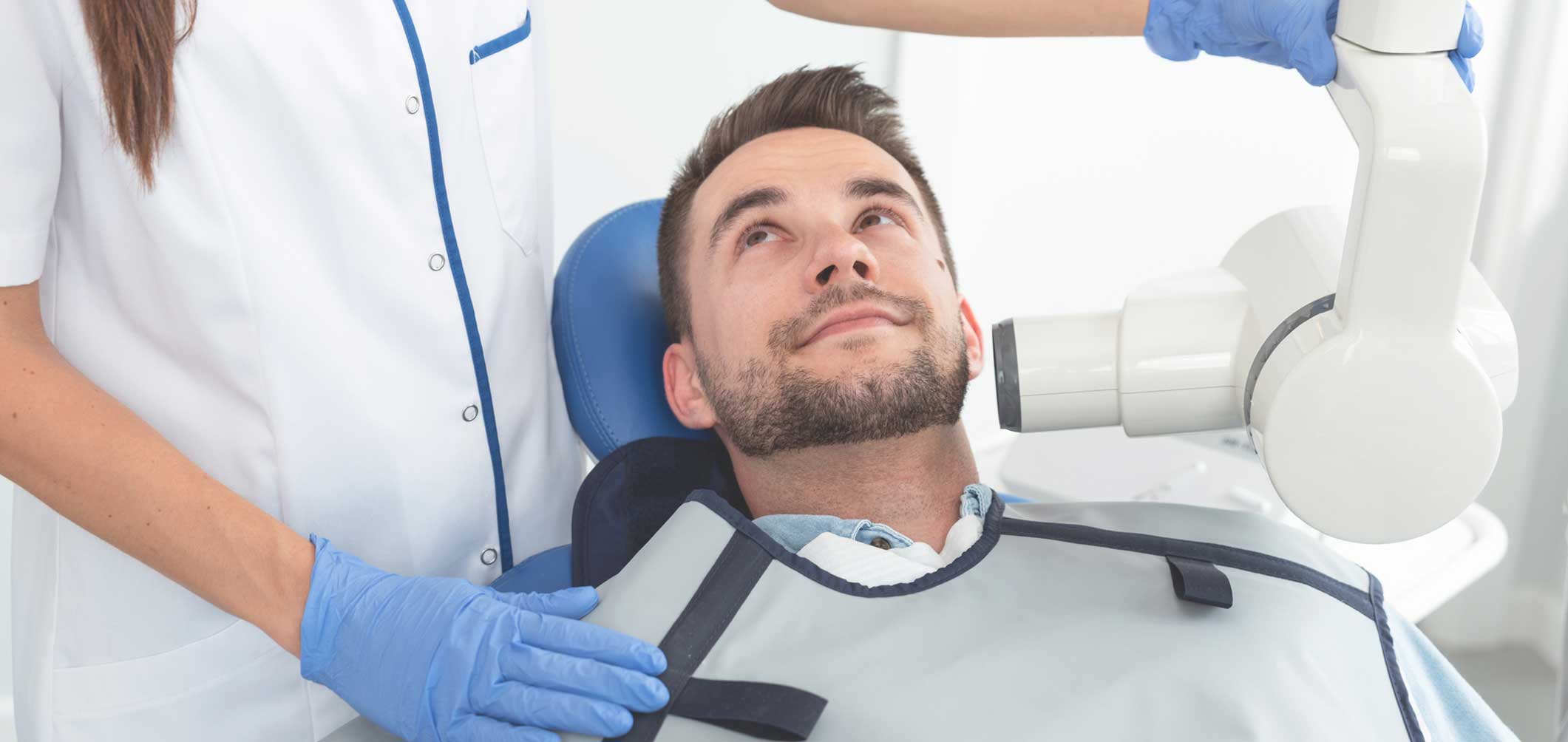Talking to X-Ray Resistant Patients

You Tell the Patient They Need X-rays and They Tell You “NO!”
What should you do when talking to X-ray resistant patients? Most patients do not argue about having radiographs taken but many do. The reasons can be varied but ultimately they all lead to the same endpoint — X-rays necessary to provide the best care don’t get taken. Not to mention the frustrating high stakes negotiation had over and over with the same patients. Some may threaten to leave the practice over the frequency of radiographs even with a new dentist where a recent set of radiographs are absolutely essential. What you need to do is figure out what the issue is and find a way to motivate the patient in a positive manner to accept the minimum necessary radiographs that will allow you to do a thorough examination.
What’s Required of You as a Dentist: The ADA and FDA Positions
The ADA, in collaboration with the U.S. Food and Drug Administration (FDA), has developed recommendations for dental radiographic examinations to serve as an adjunct to the dentist’s professional judgment of how to best use diagnostic imaging. Radiographs can help the dentist evaluate and definitively diagnose many oral diseases and conditions. However, the dentist must weigh the benefits of taking dental radiographs against the risk of exposing a patient to X-rays, the effects of which accumulate from multiple sources over time. The dentist, knowing the patient’s health history and vulnerability to oral disease, is in the best position to make this judgment. For this reason, the ADA’s recommendations are intended to serve as a resource for the practitioner not as standards of care, mandates, or regulations. Developing a needs-based approach to radiographs (versus frequency based) will minimize additional radiation exposure.
What Do You Say to the Patient That Refuses X-rays?
What to say depends on the real reason behind the request. If you don’t flush out the reason there is little chance that you can get them to change that initial “NO” to “YES!”. To deal with X-ray resistant patients you must uncover why they feel the way they do about allowing radiographs. The two most common patient concerns are cost or radiation exposure. So when a patient objects to radiographs, resist the natural urge to explain why they are necessary and instead start with asking “Why are you hesitant to have X-rays taken?”.
Whether the issue is cost, safety, or something else, logic alone may not work as often these concerns are emotionally based and overblown. The tried and true “Feel, Felt, Found” approach to conflict resolution can be a great way to break down the walls between you and your patient. It provides you and your staff with an easy method to respond to patients in an effective and empathetic manner.
When Cost of X-Rays is the Primary Concern
If the patient has no dental insurance coverage they may be truly concerned about the cost of the radiographs versus the amount of radiation. The logical argument in this situation is that without early detection, something small, now, can turn into something larger, and far more costly, later. You could use the example of a small cavity that ultimately requires a root canal, explaining the cost difference of filling a cavity versus restoring a tooth after endodontic therapy.
And here’s how that might sound using Feel, Felt, Found language:
Dentist: “Mrs. Smith, I understand how you feel. Initially other patients in similar situations have felt the same way. What they’ve found, is that once they understand the cost of missing something small, now, versus fixing something large, later, they want to move forward with X-rays. May I give you an example?”
Patient: “Okay sure.”
Dentist: “For example, taking care of a cavity while it’s small is easy and inexpensive. Left untreated it can become a much more difficult procedure like a root canal and restoration which costs thousands of dollars.”
Pause and listen to the response offering additional clarification of questions or uncovering other concerns.
If the patient seems more open to the idea, you’re now in a good place to ask if it’s okay to take the radiographs. Often they will consent because you gave them a good logical reason why you need the X-rays (for early detection which is ultimately better from a health and financial perspective), in a way that addresses the emotional elements as well. Listening to and acknowledging how they feel has built empathy and rapport. Sharing that others have felt the same way creates trust and moves them to a more objective position. Showing them that others in the same initial position have changed their minds with a positive outcome often persuades them to change their mind as well.
What to Say to a Patient Who Refuses X-rays Over Safety Concerns?
If the patient has dental insurance that pays for X-rays at 100% then it is usually safe to assume that the reason for resistance is radiation exposure concerns. For many of these patients the fear is understandable. They may tell you that they have had lots of past radiation exposure from medical imaging such as CAT scans and MRI’s. We have to always remember that most patients have no idea just how low the radiation dose from dental X-rays really is.
The facts that will appeal to a patient’s logic are that the amount of radiation from an annual set of four bitewing radiographs utilizing digital sensors, about 0.005 mSv (micro-Sieverts), is less than the average daily dose of radiation we receive from going about our daily routines. A relatable comparison is that we get more radiation from a trip on an airplane or a day at the beach than we do from dental X-rays. In offices that use handheld X-ray units, older patients may be comforted by the fact that the staff no longer has to leave the room to take radiographs. Finally, you may be able to reassure them by offering to double drape the apron as added protection.
So here’s the Feel, Felt, Found dialogue for this situation:
Dentist: “Mr. Green, I understand how you feel. Initially other patients with concerns about X-rays have felt the same way. What they’ve found, is that when given a complete understanding of the health benefits of having X-rays versus how little exposure modern X-rays really involve, they want to have X-rays taken. May I explain how little?”
Patient: “Yes.”
Dentist: “Great. A set of modern X-rays provides less radiation than we get on a single plane flight or a day at the beach. But they allow me to find things like small cavities or decay well before I can see them with my eyes, or they start to cause you pain. It gives us the best chance of avoiding more invasive and expensive procedures down the road.”
Their Health May Depend on Your Persuasive Skills
Taking radiographs is an important part of the dental examination, early diagnosis, and intervention. Failure to adequately diagnose due to lack of radiographs may place the dentist in a position of supervised neglect which has its own medical legal complications. Your responsibility aside, resisting routine radiographs can cause patients undue dental health complications which could have been avoided. The patients may be fully to blame but you are in a position to change their outcomes. So consider polishing your team’s persuasive skills and rehearsing scripts for everyone’s benefit.
What is the ALARA Principal?
The guiding principle of radiation safety is “ALARA”. ALARA stands for “as low as reasonably achievable”. This principle means that even if it is a small dose, if receiving that dose has no direct benefit, you should try to avoid it. To do this, you can use three basic protective measures in radiation safety: time, distance, and shielding.



